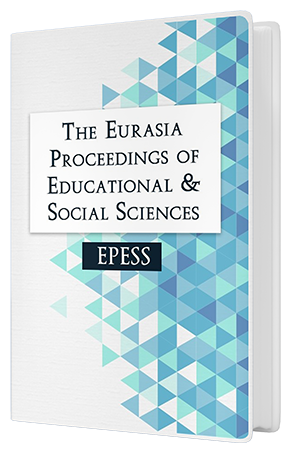Investıgatıons of These Different Variables and Anger Levels, Angel Expression Styles of Child Development Program Students
Keywords:
Anger expression style, Anger level, Child development programAbstract
Anger may arise as a result of the interaction of different variables, such as individual and familial characteristics that individuals possess, education and work environments they have received. Depending on these variables, it is thought that children will not be able to tolerate the different forms of anger they see in adults. For this reason, it is important to determine the level of anger and the anger styles of child educators who spend a long time with children in early childhood. From this point of view, this study was conducted to determine the anger level and anger style of the Child Development program students. The research is descriptive and has consisted of students who attend in the Child Development Program at the Vocational School of Social Sciences of Kafkas University. Based on the principle of volunteering, 77 students participated in the research. Demographic information form and Continuous Anger/Anger Expression Style Scale were used as data collection tool. Scale consists of 4 dimensions such as continuous anger, anger-in, anger-out, and anger control. The students' continuous anger scores 23.77±6.28; anger-in score 18.15±4.40; anger-out score 17.78±4.94; and anger control scores 21.68± 5.50 were obtained. As a result of the statistical evaluations, it was determined that the continuous anger subscale significantly changed according to the family types (F (2,73)=5,078, p<0,05). According to the results of the research, it was found that the anger scores of the individuals without family unity were higher.Downloads
Published
Issue
Section
License
Copyright (c) 2018 The Eurasia Proceedings of Educational and Social Sciences

This work is licensed under a Creative Commons Attribution-NonCommercial-ShareAlike 4.0 International License.
The articles may be used for research, teaching, and private study purposes. Any substantial or systematic reproduction, redistribution, reselling, loan, sub-licensing, systematic supply, or distribution in any form to anyone is expressly forbidden. Authors alone are responsible for the contents of their articles. The journal owns the copyright of the articles. The publisher shall not be liable for any loss, actions, claims, proceedings, demand, or costs or damages whatsoever or howsoever caused arising directly or indirectly in connection with or arising out of the use of the research material. All authors are requested to disclose any actual or potential conflict of interest including any financial, personal or other relationships with other people or organizations regarding the submitted work.




